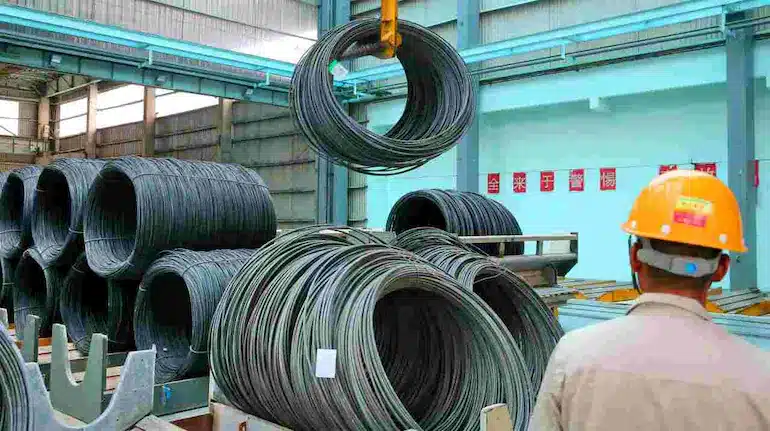Challenges Ahead for Indian Steel Exporters

The Indian steel industry is bracing for new challenges as U.S. President Donald Trump announces plans to reintroduce a 25% tariff on all steel and aluminum imports. This decision has sparked criticism from major trading partners, including the European Union and China. The potential impact on Indian steel producers is significant, especially as they navigate an already difficult market characterized by low prices and falling earnings.
The Impact of U.S. Tariffs on Indian Steel Producers
Global rating agency Moody’s has issued a warning regarding the implications of the U.S. tariffs on Indian steel manufacturers. These producers have been under pressure for years due to high steel imports into India, which have contributed to oversupply and reduced earnings. Hui Ting Sim, an assistant vice president at Moody’s, stated that the tariffs would intensify competition and worsen the oversupply situation in other steel-producing markets. This means that Indian steel exporters may find it increasingly difficult to sell their products abroad.
Data from the Global Trade Research Initiative (GTRI) reveals that U.S. imports of steel and aluminum have been on the rise, even amid ongoing trade tensions. In 2024, primary steel imports reached $33 billion, up from $31.1 billion in 2018. The largest suppliers included Canada, Brazil, and Mexico, while imports from India and China remained relatively low. Ajay Srivastava, founder of GTRI, noted that Trump’s tariff strategy appears to be a tactic for leveraging trade negotiations. If history is any guide, this could lead to new trade disputes and retaliatory measures from affected countries.
Domestic Market Resilience Amidst Global Challenges
Despite the looming tariffs, Indian steel secretary Sandeep Poundrik expressed confidence in the domestic market’s ability to withstand the impact. He pointed out that India produced 145 million tonnes of steel last year, with only 95,000 tonnes exported to the U.S. This small percentage suggests that the tariffs may not significantly affect the overall industry. Poundrik emphasized that the growing domestic consumption of steel would continue to drive demand, making the Indian market robust enough to absorb any shocks from international trade policies.
The Indian steel industry is poised for growth, with increasing infrastructure projects and urbanization driving demand. As the domestic market expands, Indian steel producers may find new opportunities to cater to local needs. This focus on domestic consumption could mitigate the adverse effects of U.S. tariffs, allowing the industry to adapt and thrive despite external pressures.
Historical Context: Lessons from 2018 Trade Tensions
The current situation mirrors events from 2018 when Trump first imposed similar tariffs on steel and aluminum imports. At that time, India retaliated by imposing additional customs duties on 28 U.S. products. After years of tariff tensions, the U.S. lifted these tariffs on Indian steel and aluminum imports in July 2023, coinciding with a broader trade resolution during Prime Minister Narendra Modi’s visit to Washington.
As Trump signals a return to aggressive trade policies, analysts warn of renewed uncertainty in global trade. If the past is any indication, U.S. steel and aluminum industries may benefit in the short term, but the long-term consequences could lead to increased global trade frictions. The potential for retaliatory measures from affected countries could further complicate the landscape for Indian steel exporters.
Observer Voice is the one stop site for National, International news, Sports, Editor’s Choice, Art/culture contents, Quotes and much more. We also cover historical contents. Historical contents includes World History, Indian History, and what happened today. The website also covers Entertainment across the India and World.

